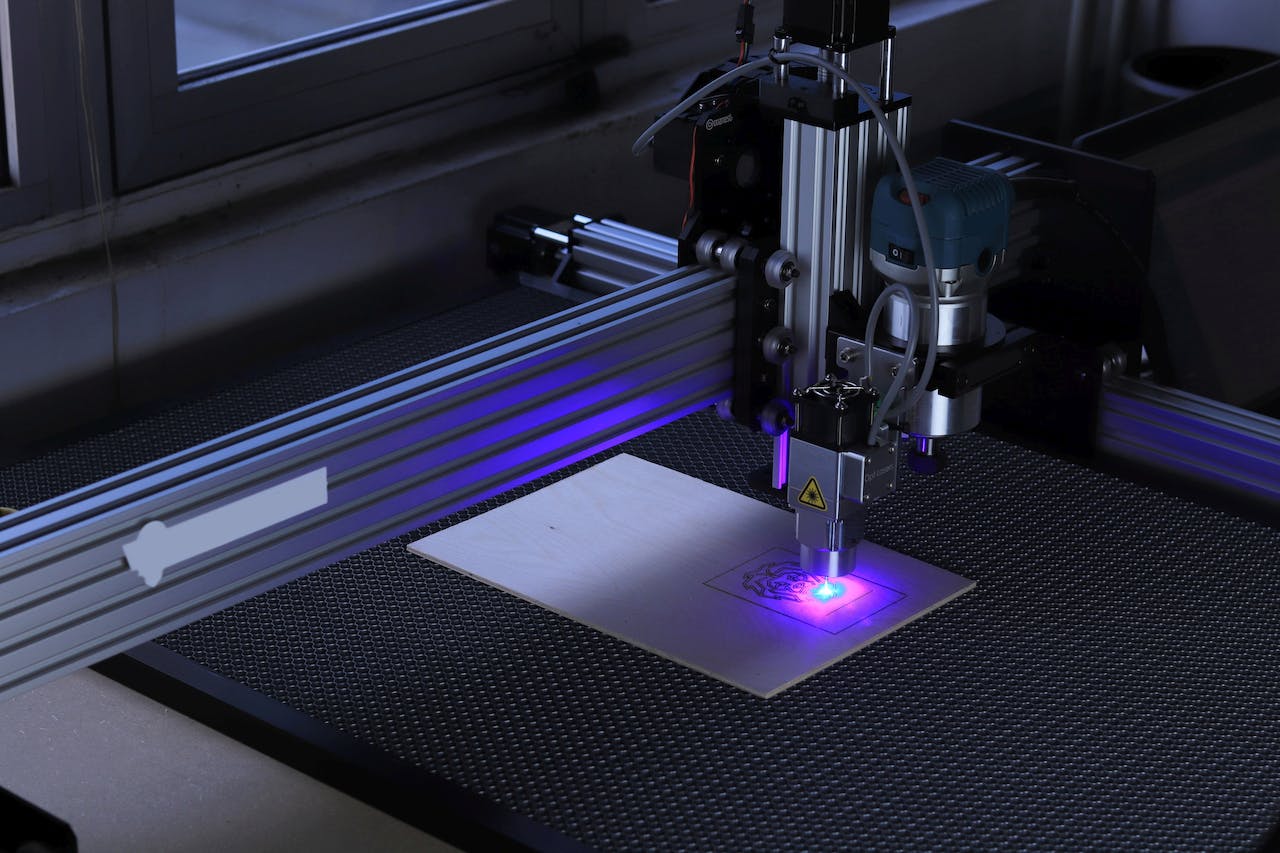
In metalwork and DIY projects, precision cutting is a fundamental process that can make or break the success of a project. Achieving precise cuts is essential for creating structurally sound designs, ensuring safety, and achieving a polished final result. Over the years, technological advancements and innovations have transformed the precision cutting field, revolutionising metalwork and DIY endeavours. This article will explore the latest innovations in precision cutting techniques and their impact on these industries.

The Importance of Precision Cutting
Before delving into innovations, let’s first understand why precision cutting holds such a crucial role in metalwork and DIY projects:
1. Safety: Accurate cuts reduce the risk of accidents and injuries during metalwork and construction tasks.
2. Quality: Precision cutting ensures components fit together seamlessly, producing high-quality end products. CNC laser cutting is a prime example of precision technology that delivers seamless component integration for top-quality end products.
3. Efficiency: Precise cuts minimise material waste, saving time and resources.
4. Aesthetics: In DIY projects, precise cuts contribute to the final product’s overall appearance and aesthetic appeal.
Now, let’s explore some innovative precision cutting technologies and techniques reshaping the landscape of metalwork and DIY.
1. Laser Cutting
Laser-cutting technology has emerged as a game-changer in precision cutting. It uses high-powered lasers to cut through various materials with exceptional accuracy and speed. In metalwork, laser cutting offers advantages such as:
– Intricate Designs: Laser cutting allows for creating highly detailed and intricate designs in metal sheets.
– Minimal Material Waste: The precision of laser cutting minimises material waste, reducing costs.
– Customisation: It enables customising metal components with complex shapes and patterns.
In DIY projects, laser cutting has become more accessible with affordable desktop laser cutters. Hobbyists and makers can now create intricate designs in various materials, including wood, acrylic, and leather.
2. Waterjet Cutting
Waterjet cutting is another innovative method that utilises a high-velocity stream of water mixed with abrasive particles to cut through materials. This technology is highly versatile and has several advantages:
– Cold Cutting: Waterjet cutting is a cold cutting process that does not generate heat, reducing the risk of material distortion.
– Versatility: It can cut through various materials, from metals and plastics to ceramics and composites.
– Environmentally Friendly: Waterjet cutting produces minimal waste and does not release harmful fumes or by-products.
Waterjet cutting is widely used in metal fabrication, and its precision is invaluable in creating intricate shapes and patterns.
3. CNC Machining
Computer Numerical Control (CNC) machining has been a staple in precision cutting for decades, but ongoing innovations continue to refine its capabilities. CNC machines are automated and controlled by computer programs, ensuring accuracy and consistency. Recent developments include:
– 5-Axis CNC Machines: These machines offer greater flexibility, enabling cuts from multiple angles with a single setup.
– Advanced Software: Improved CAD/CAM software allows for more complex designs and better toolpath optimisation.
– Enhanced Materials: CNC machines can handle a broader range of materials, including superalloys and high-performance plastics.
In DIY projects, CNC machines have become more accessible, allowing hobbyists to create custom parts and prototypes with precision and efficiency.
4. Plasma Cutting
Plasma cutting is a technique that uses a high-temperature, ionised gas (plasma) to cut through conductive materials. While it has been around for a while, recent innovations have improved its precision and versatility:
– Fine Cut Technology: Plasma cutting systems now incorporate FineCut technology, allowing precise cuts in thin metals.
– CNC Integration: Plasma cutting machines can be integrated with CNC systems for automated and highly accurate cuts.
– Multi-Process Systems: Some plasma cutting systems offer multiple cutting processes, including bevel cutting and marking.
Plasma cutting is commonly used in metal fabrication, especially in automotive manufacturing and shipbuilding industries.
5. 3D Printing and Additive Manufacturing
While not traditionally associated with cutting, 3D printing and additive manufacturing have revolutionised how custom parts are created. Instead of cutting away material, these processes build objects layer by layer. Innovations in 3D printing include:
– Metal 3D Printing: The development of metal 3D printing technologies allows for precisely creating intricate metal parts. Metal bending complements 3D printing by enabling the design of complex shapes and structures in metal without traditional cutting methods.
– Multi-Material Printing: Some 3D printers can combine different materials in a single print, offering greater design possibilities.
– Large-Scale Printing: Industrial-scale 3D printers can produce large, complex structures with high precision.
In DIY projects, 3D printing has empowered makers to create custom components and prototypes with incredible precision, opening up new possibilities in various fields, from robotics to fashion.
6. Advanced Cutting Tools
In addition to technological innovations, advancements in cutting tools have also played a significant role in precision cutting. High-quality cutting tools, such as carbide and diamond-tipped blades, router bits, and drill bits, are essential for precise cuts in various materials. These tools are now more durable, efficient, and capable of maintaining sharpness over extended periods.
Impact on Industries
These innovations in precision cutting have had a profound impact on multiple industries:
1. Metalwork and Manufacturing: Precision cutting technologies have improved efficiency, reduced waste, and expanded metal fabrication and manufacturing design possibilities.
2. Construction: Accurate cuts are essential in construction for creating safe and aesthetically pleasing structures. Innovations in precision cutting have streamlined construction processes.
3. DIY and Makers: Accessible and affordable precision cutting tools and technologies have empowered DIY enthusiasts and makers to bring their creative ideas to life precisely and accurately.
4. Innovations: Precision cutting is at the heart of many innovations, from aerospace components to medical devices, allowing for creating complex and reliable products.
Innovations in precision cutting have ushered in a new era of possibilities in metalwork, construction, DIY, and innovation. These technologies and techniques have improved accuracy and efficiency and made precision cutting more accessible to a broader range of enthusiasts and professionals. As these innovations evolve, we can anticipate even more significant advances in precision cutting, further transforming how we create, build, and innovate.